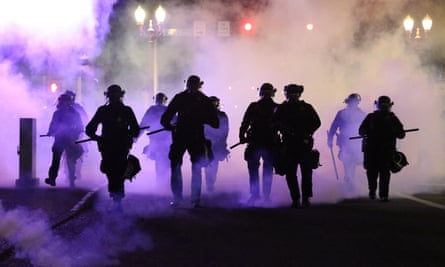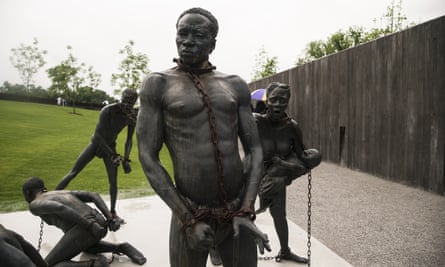In a scene from the 1992 Denzel Washington–directed movie Antwone Fisher, the central character shows up on the doorstep of his childhood foster home and is greeted by a woman who had spent years sexually abusing him when he was young.
“Come here, baby,” she greets him. “Don’t touch me,” he snaps.
He is no longer a little boy, but rather a man matured by the US navy.
“I’d like to speak to Mrs Tate,” he tells his tormentor, referring to the foster mother who had spent years treating him like a disposable diaper and “beat me to dust”, until he ran away at the age of 14 and got into trouble before finding his way into the military.
Fisher was placed with the Tates, a deeply religious couple, when he was two years old. His father had been killed before he was born. His teenage mother gave birth to him while she was in jail.
“Oh nigga, hug my neck!” Mrs Tate says with a smile while trying to embrace him, as though she were a long-lost friend, not an evil that had nearly destroyed Fisher.
He doesn’t hug her neck or any part of her, doesn’t smile, doesn’t pretend to want anything to do with her. He doesn’t need an apology she doesn’t think to offer. He neither wants nor needs her approval. The scars are still too fresh, too deep, all those years later.
“You couldn’t destroy me,” he says, defiance dripping from every syllable he speaks. “I’m still standing. I’m still strong! And I always will be.”
I’m Antwone Fisher to white America’s Mrs Tate. I don’t want it to be that way. But I don’t know how to be otherwise. The scars are too deep, too fresh. I knew we were in trouble when I couldn’t find a way to not be angry, because I had never been angry before, not in a sustained way. If a black man like me was having trouble corralling his anger, I knew it meant that anger among black people had to have risen to biblical proportions and could ignite given the right spark. I just didn’t know that spark would be eight minutes and forty-six seconds of a video of a white cop slowly, defiantly snuffing the life out of a black man on the concrete in broad daylight in front of numerous onlookers.
As I type these words in June 2020, I get that the Confederate flag came down after the massacre in Charleston. I appreciate that cities, counties, and police departments have begun rethinking their use-of-force policies, that police unions are being pressured to allow reform or get out of the way. Symbols of white supremacy are under attack – monuments, memorials, Gone with the Wind – in a way I had never seen in my lifetime. Demonstrators throughout the world called George Floyd’s name in solidarity with black Americans. New York repealed a law that had kept police discipline records private. Lady Antebellum became Lady A.
Protesters chopped off the head of a monument built in honor of Robert E Lee, the man who led the Confederate army. They threw a statue of Christopher Columbus into a lake. Clemson University trustees voted to remove the name of slavery champion John C Calhoun from its Honors College. The mayor of Boston declared racism a health emergency and dedicated $3m in funds to deal with it. Nascar – yes, Nascar! – banned the Confederate flag from all its properties and events. Even The Bachelor has named its first black lead.

Still, I’m jaded. That’s why I’m having a hard time processing how to feel after years of banging my head against a brick wall and finally seeing cracks emerge. I’m not yet convinced white people are willing to do what it would take to enact the changes we need, even after the most sustained and widespread protests of my lifetime. I fully expect that even after all we’ve seen, all the harm Donald Trump has done on the issue of race, and so many other things, that he is more likely to garner 60% of the white vote in November than 50%. I fully expect that he will win the white vote at every economic level the way he did in 2016. I fully expect that if Trump finds a way to get a second term, it will be because white America decided that white supremacy and racism aren’t deal breakers – even in 2020.
The immediate changes made in the wake of the George Floyd protests were positive. But they were low-hanging fruit. White supremacy and anti-black racism have to be pulled up by the roots in order for long-lasting reform to take hold. If that doesn’t happen, if there is no real racial reckoning, history will repeat itself. The past has made that clear. When I was a student at Davidson College in North Carolina in the early 1990s, I sat in my dorm watching on CNN scenes from the LA riots after the Rodney King verdict. Not too long after I finished teaching a couple of journalism courses at Davidson during the spring 2020 semester, Floyd was murdered by police in Minnesota.
White supremacy meant a race-based chattel slavery would be further entrenched after black people helped white colonists defeat the British. It meant Reconstruction, during which black people made significant steps forward even though they were only recently freed from slavery, was followed by Redemption and the rise of the Ku Klux Klan and a century of lynchings. Black excellence along “Black Wall Street” in Tulsa was met by mobs of white vigilantes and their friends in the military and police who murdered hundreds of black people and left thousands homeless. Black veterans were treated worse than German POWs during world war II. White supremacy convinced white parents and school officials to be defiant in the face of a 1954 supreme court that supposedly killed Jim Crow – then convinced white voters to follow the era of the nation’s first black president with the election of a man whose rise to political heights was powered by the open use of bigotry and racism.
I interviewed the famed civil rights attorney and civil rights crusader Bryan Stevenson after his organization opened the nation’s first memorial dedicated to the nearly 5,000 people known to have been lynched throughout much of the 20th century. He spoke about how the Holocaust Museum motivates every visitor to say “never again”.
We haven’t done that for the legacy of slavery in this country.
“We haven’t created spaces that present the history of racial inequality in this country in a way that motivates people to say ‘never again’,” he said. “Because we haven’t said ‘never again’, people say things that are ignorant about enslaved people being responsible for their slavery or being lynched, or segregation being something that black people wanted. I think that mindset has just not been disrupted by the truth of what our history is. I do believe the truth can make us free. Understanding what has happened, despite its brutality, is key to us creating a better future.”
Neither have we fully grappled with the trauma inflicted upon those wearing dark skin in a supposedly free country.

“I don’t think we understand what trauma does; I don’t think we appreciate how we have institutionalized a lot of trauma by the way we have been indifferent to basic human needs,” Stevenson told me. “From enslavement, where 50% of all enslaved people were separated from their spouse or their family members, that’s traumatic. Lynching, to have people of color hanged and brutalized and tortured while others cheer is absolutely traumatizing. To have to learn how to exist in a society where your humanity is constantly denied and demeaned by segregation can be incredibly traumatizing and injurious. And even now, to live in a country where if you are black or brown and can be presumed dangerous and guilty just because of your color. And to have to navigate around other people’s presumption of your dangerousness, when you are not dangerous, it’s exhausting.”
I’m exhausted. Most black people I know are exhausted. While I want to be encouraged by what we saw after the murder of George Floyd, I can’t – not yet. Pulling down monuments and furling the flag of traitors that should have never been flown on public property – or demanding that police officers kill only when absolutely necessary, as a last resort and not because they were afraid or angry – might get us closer to zero, but it won’t guarantee true racial equality. Too much damage has been done. The wounds are still too fresh. I’ll know white America is serious about long-lasting change when they begin to punish politicians who use white supremacy and white fear as political weapons and tools. The first Tuesday in November will begin telling the tale.
Excerpted from Why Didn’t We Riot?: A Black Man in Trumpland by Issac J Bailey, soon to be published by Other Press
